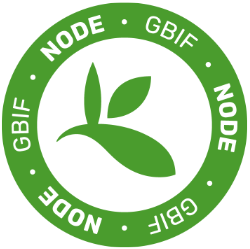Courtesy of the iDigBio Paleo Digitization Working Group
What price do you put on a holotype or paratype? What price do you put on extripated or extinct (recently living) species? What price do you put on specimens from sites that no longer exist and are not collectable?
Putting a monetary value on a paleontological collection for insurance purposes can be a trying process. One suggestion is to look for a standard sq. ft. estimate or just take your top 10 or so specimens and have them appraised. Sadly, considering the diversity of collections, setting a “standard” could be so general as to be useless.
The Royal Tyrrell Museum spent years wrestling with this question, and finally decided to insure their "best" specimens. Because most of the collection is comprised of a majority of isolated elements it means that for every $5 tooth there is a corresponding $500,000 skeleton. Because of the abundance of teeth, both in collections and in nature, the odds are much greater of finding another 50 teeth before finding another complete skeleton. It was decided the isolated teeth were not worth insuring. In the real world every item you want to insure increases your deductible, so it was determined that, bang for the buck, insuring the big ticket items was the way to go.
Additionally, you can usually insure your specimens at replacement value (what it would cost to go out and find, excavate and prepare another specimen of similar quality) or market value (what would it cost to buy another specimen of similar quality). Market value is almost always higher, and thus it costs more to insure your specimens at market value rather than replacement value.
Holotypes, complete skeletons, complete skulls and anything on exhibit (or other at-risk locations) may be the best objects to insure at market value, and essentially just hope for the best. Another way of looking at it, it's easier to explain to the media that in a flood or robbery you lost 1000 uninsured teeth worth $100 each than an uninsured T.rex worth $100,000.
Appraising the top 10 may be feasible for some collections, but how do you apply a value to 40,000 specimens ranging from micro to macro, plants to vertebrates, and even geological specimens?
To get a realistic evaluation requires a quality procedure that is extensive and thorough.
One way is to begin by estimating how much it costs to collect the average specimen for each Preparation type you have.
Include:
· Salary costs over the years
· Time spent funding and organizing expeditions
· Fuel costs, Transport costs
· Preparation costs
· Heat, light, electricity, space costs for curation
· Shelving costs
· Salary cost to curate and manage
· Cost of digitization
Multiply by the number of specimens/objects of each prep type.
You could allow for inflation and the value of the dollar by looking at an economic chart of dollar values, say decade by decade. If you have old collections, today's dollar equivalent might be much more than the dollars spent at the time of collection.
These calculations will most likely result in a nice report you can entitle, “Re-discovered: University Collection of Immense Value". That should attract institutional and press attention.
You may also make use of a specific research grant. Figure the number of specimens collected on the specific grant. Calculate a collection cost per specimen and apply that to the entire collection. Add a curation cost by using the salary of a graduate student working on one specific incoming collection and make the same per specimen calculation. Note this does not include the long-term conservation, curation, and added digitization costs.
The Karoo Paleontology Collection at the DITSONG: Natural Museum of Natural History, decided that the replacement value of fossils is the value of recollecting the specimen. However with Type specimens, this value is multiplied by 3. The logic being it might take 3 trips to replace a Type.
Whatever method you consider, discuss your options with your institution’s Risk Management officer. They may take the options to the insurance company to be approved as a sufficient way to value the collection.
Also see The Value and Valuation of Natural Science Collections edited by John R. Nudds, Charles William Pettitt. It is a 276 page book of the proceedings of a conference held to discuss this topic. Published by The Geological Society Publishing House, Unit 7, Brassmill Enterprise Centre Brassmill Lane, Bath BA1 3JN UK 1997
http://books.google.com/books?id=GPA1nDUqSX4C&printsec=frontcover#v=onepage&q&f=false







